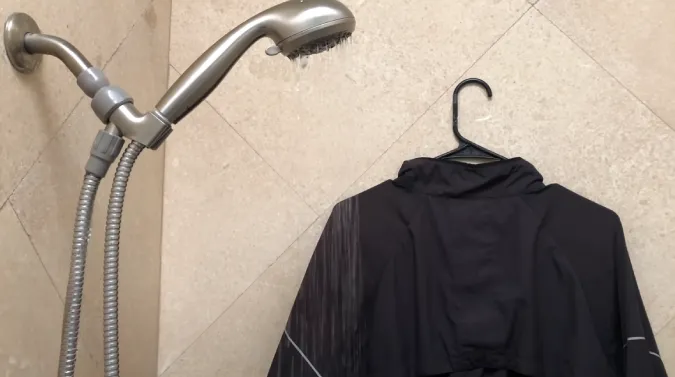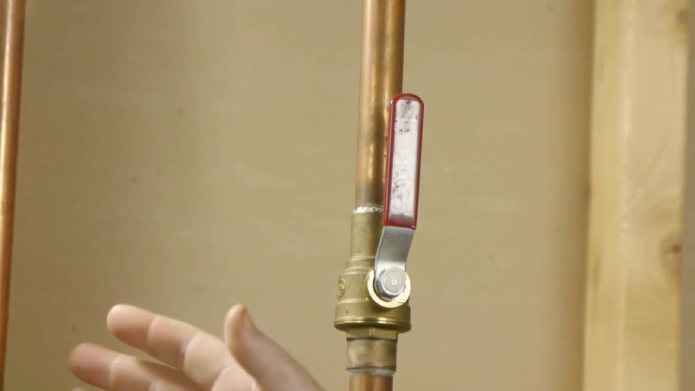Last Updated on May 16, 2023
Are you experiencing a sudden loss of water pressure in the shower only but not in the sink? Or is your hot water pressure lower than your cold water pressure? This can be a major inconvenience, especially if you’re trying to prepare for the day. A common cause of this issue is a malfunctioning or failing shower mixing valve.
The mixing valve controls the temperature and pressure of the water flowing into your showerhead. If it fails, this can result in decreased water pressure and even uneven temperatures when running the tap.
Here we will explain how shower mixing valves can cause low water pressure and how to fix them. We’ll also look at signs that indicate it’s time to replace your current one. So keep reading to learn more about how a faulty shower mixing valve can affect your water pressure.
How Can a Shower Mixing Valve Cause Low Water Pressure: 5 Reasons

Shower mixing valves regulate water pressure and temperature, ensuring that showers are enjoyable and safe. But when a shower mixing valve malfunctions or becomes blocked, it causes low pressure and other issues.
Here are some common reasons on how do mixing valves reduce water pressure in the shower:
Malfunction Shower Mixing Valve
When a shower mixing valve stops functioning correctly, it can cause low water pressure. This might be because the internal components that regulate flow have become worn or damaged over time.
It could also be due to an issue with the handle or knob on the face of the valve, which is responsible for controlling the flow rate. If the problem lies within a faulty internal component, a professional plumber must inspect and replace it to restore normal water flow.
Blocked Shower Mixing Valve
If the inner workings of your shower mixing valve have become blocked with material like calcium deposits or dirt particles, this could impede water flow and lead to low water pressure in your shower head.
To rectify this issue, you must clean out any debris inside the valve using an appropriate cleaning solution before flushing it through with fresh water. If you cannot remove all the blockages yourself, you should hire a professional plumber with experience dealing with these types of problems.
Faulty Internal Components
Faulty internal components such as O-rings can result in low water power in showers when worn down or damaged over time. Rubber seals keep water from leaking and regulate flow through the system, so your shower head won’t have as much water to use if they’re compromised.
To repair this issue, you will either need to replace the O-ring completely or purchase another part that fits into its place to maintain a proper connection between two pieces of equipment within your plumbing system.
Sediment Buildup in Shower Mixing Valve

Sediment buildup inside your mixing shower valve can also lead to reduced water pressure because it blocks vital components such as valves and O-rings from operating correctly. Usually, this sediment is dirt and minerals that get into your pipes due to corrosion or an aging infrastructure. But it could also be larger items like toys or coins dropped down sinks.
To clear out any blockage caused by sediment buildup, you may need professional assistance and specialized tools designed specifically for dealing with these issues, so make sure you take adequate safety precautions before attempting anything yourself at home!
Air Trapped in The Mixing Valve
Lastly, air trapped in shower mixing valves can cause low hot water pressure since it takes up space within pipes where liquid should be. When installs aren’t done right, air can enter the pipes, but backflow preventers can also let small amounts of air in. If this happens, it needs to be addressed right away.
The best way to completely rid yourself of this problem is by having a certified plumbing technician inspect both ends of supply lines for any signs of leakage before attempting any repairs themselves at home.
Does Any Shower Mixing Valve Affect Water Pressure?
Water pressure can be affected by any shower mixing valves. The shower mixing valve redirects hot and cold water from the source lines, mixing them to create the desired shower temperature. This causes a drop in water pressure as the mixed water is diverted away from other outlets within the system.
In older homes with old plumbing systems and valves, mineral buildup along the valve walls can make regulating water temperature and pressure harder with a mixing valve. Consequently, your shower head’s overall pressure will be lower over time because the hot and cold sides of the line are losing pressure.
If you want adequate water pressure for your showering needs, you should periodically inspect your mixing valve for clogs or blocked passages that reduce the flow rate. This is especially true if a lot of minerals are present in your home’s water supply, which could lead to corrosion inside pipes or valves.
How Do I Know If a Shower Mixing Valve is Bad?

The signs that your shower thermostatic mixing valve may be bad are often easy to spot. If you suddenly notice changes in water pressure when switching between hot and cold water, it may be because your shower mixing valve is bad.
If there is a noticeable drop or spike in pressure, then it’s likely that a faulty mixing valve is causing the issue. Also, if you start to see rust or corrosion on the outside of your mixing valve, it could indicate that it needs to be replaced.
Another potential sign of a bad mix valve is if you find yourself having difficulty adjusting the temperature balance between the hot and cold water. If you used to be able to adjust it easily, but now you’re having trouble finding the right temperature, your mixing valve might be faulty.
Sometimes these issues are not caused by a broken valve at all. Instead, it could be due to limescale build-up inside the pipes, resulting in pressure imbalances and changes in water temperatures.
It’s important to ensure that all your pipes are regularly maintained so that this limescale does not become an issue. But if this has not been done for some time, then it might be worth checking out your plumbing as an additional precaution before diagnosing.
What Happens When Shower Mixing Valves Fails?
When a shower mixing valve fails, resulting in hot water running hotter than it should, the water temperature regulator cannot keep the water at a safe level. This can cause scalding in those using the shower.
In addition to scalding risks, a malfunctioning shower mixing valve can strain your water heater due to increased usage. Hot water heaters must be of sufficient capacity to handle the hot water used by all appliances at once.
If the shower mixing valve sends out hotter-than-normal water, then more hot water will be needed from the heater than expected. Regular inspection and maintenance of your shower mixing valves are essential to prevent these issues from occurring.
Spotting issues early means they can be addressed quickly and easily before they cause any real damage or injuries. You should contact an experienced plumber as soon as you notice anything wrong with your valves.
Can You Adjust a Malfunction Low Water Pressure Shower Mixing Valve?

A malfunctioning low-water pressure shower mixing valve can be difficult to work with, but it is possible to make adjustments. To begin, you will need to identify the source of the issue. The most common causes are an inefficient valve or a blocked diverter.
If your shower has a recessed valve, you may need to access the inside of the wall to check for any issues with the valve itself. If a diverter is causing your low water pressure, you may need to check for any blockages in the pipes leading up to it and ensure they are clear.
Once the source of the problem has been identified, the next step is to adjust the shower mixing valve accordingly. This can be done manually by adjusting screws that control the valve’s water temperature and flow rate.
It is important to remember that this process should only be undertaken if you are confident enough in your abilities, as these screws can be sensitive and easily damaged if not handled properly. Consider hiring a professional plumber if you are uncomfortable making these adjustments yourself.
In some cases, replacing or upgrading your existing valve is necessary if it cannot be adjusted effectively enough. Upgrading from an inefficient model can help improve water pressure significantly and provide a more consistent flow when using your shower.
What Other Issues Can Cause Low Water Pressure Instead of a Shower Mixing Valve?
There are a variety of possible causes, some of which are related to a shower mixing valve, but many of which are unrelated to the valve itself. Some other common reasons why your water pressure may be low include the following:
Low-flow showerhead
The most common cause of low water pressure in a shower is not related to the valve at all; rather, it is usually due to the installation of a low-flow showerhead. Many homeowners choose these showerheads to conserve water and reduce their monthly utility bills.
But they often provide lower water pressure than traditional models do. To increase the water pressure, installing an upgraded model or adding an adjustable flow restrictor to the existing one may be necessary.
Clogged Shower Head
Shower heads clogged with mineral deposits or hard water buildup can cause extremely low water pressure when a shower is taken. This can happen even if the head is relatively new and recently installed.
Unclogging the head should eliminate any problems associated with reduced water flow and improve overall performance.
Faulty Water Pressure Regulator

Water pressure regulators are used to control the amount of pressure flowing into homes from municipal lines or private wells. These devices are designed to maintain consistent levels of pressure throughout the home, but they sometimes malfunction and cause decreased flow from fixtures such as sinks and showers.
Water Heater Issue
If an electric water heater is not working correctly, it can cause reduced output at bathroom faucets and showers due to restricted hot water flow through pipes throughout the house. Older units may fail due to corrosion or sediment buildup, while newer units could malfunction due to electrical or thermostat problems.
Corroded or Leaking Pipes
Corrosion on older galvanized steel pipes will eventually create pinhole leaks that restrict essential household water supply lines over time, leading to reduced flows through taps and showers.
If there are leaky joints in the plastic piping, it might cause the water pressure to be lower when using bathroom fixtures like showers and faucets downstream from those joints. This happens because the water has to travel through those leaky joints before it gets to the fixtures.
Enjoy Perfectly Balanced Water Pressure with a Good Shower Mixing Valve
A shower mixing valve helps to ensure that your taps run at an even temperature and provides a comfortable level of water pressure. Unfortunately, just like other parts of a plumbing system, there will come a time when it needs to be replaced or adjusted for maximum efficiency.
If you notice any signs of low water pressure in the shower or any other part of your home’s plumbing system, it could be due to a malfunctioning or broken shower mixing valve. You must take action as soon as possible by inspecting the issue yourself or calling up a professional plumber so that they can help identify and resolve the problem before further damage occurs.



